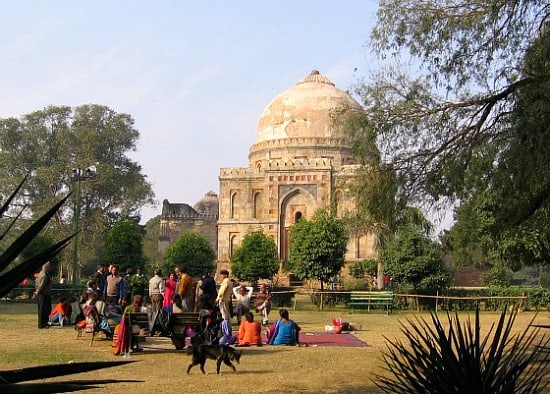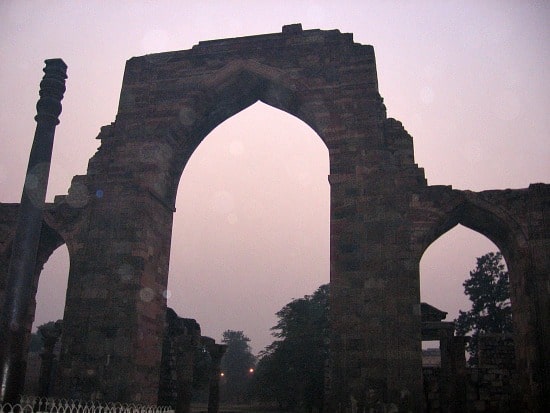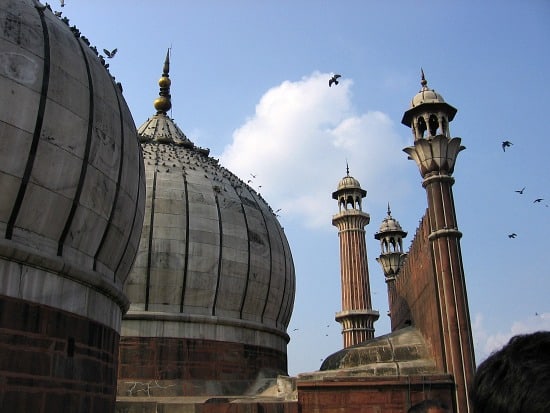
Lodhi Garden, New Delhi
Delhi turns 100 as capital of India, a milestone met with mixed feelings.
When I was getting ready to travel to India the first time, back in 2005, I had several friends warn me: “You won’t like Delhi. It’s crowded, it’s polluted, the people are aggressive, you will be pestered to distraction.” I’d heard lots of stories about Pahar Ganj, the grubby “traveler’s ghetto”; the challenges of buying tickets and arranging any kind of transportation; the scams and the con artists; the crowds and chaos.
However, my first morning in Delhi, I walked out into the warm December sunshine on the big, white marble terrace of my friend’s home in South Delhi and was greeted by the family, who offered me breakfast. Later, a man arrived with a huge bundle of gorgeous shawls and fabrics, and I sat on the terrace drinking tea and shopping with the ladies of the family. It was all very civilized and I felt I had arrived in heaven, not the hell that I was promised.
That’s when my love affair with Delhi began, and it has never ended — though I have had my moments of frustration and annoyance, like everyone else, and have witnessed heart-breaking scenes of poverty at the side of the road.

Pink sunset at Qutab Minar, Delhi
Celebrating the City
On December 12, 1911, during a magnificent durbar on the outskirts of Delhi, King George V proclaimed that the capital of the British Raj would be moved from Kolkata to Delhi. For the next 20 years, the new city of New Delhi was built, under the leadership of visionary architect Sir Edwin Lutyens.
So, while the anniversary of Delhi is greeted with mixed feelings by Indians — who are usually not keen to celebrate anything the British Raj created — I am quietly celebrating my home-away-from home — the city that greeted me so hospitably when I first arrived in Delhi, and continues to be my beloved home base in India.
In an article about New Delhi at the time of the city’s inauguration, in 1931 (New Delhi, The First Impression) the very talented travel writer Robert Byron wrote, “The surprise which awaits the traveler on his first view of the imperial capital will be proportionate to the fixity of his previous ideas about it.” This was certainly true for me; no one had told me that New Delhi is also beautiful. And gracious, historical, cultural, green, spacious, and a paradise for shoppers and foodies.

Jama Masjid, Old Delhi
Top Ten Favorite Things to Do in Delhi
- soft mornings and pink sunsets
- the inspired and majestic symmetry of the planned city of New Delhi
- the profusion of green: leafy enclaves, tree-lined boulevards, gracious gardens, lush parks, verdant historical sites
- shopping! at Khan Market, Lajpat Nagar, Hauz Khas, Karol Bagh, South Extension, Janpath, Sunder Nagar, Greater Kailsh 1 M- and N-Block markets, Arobindo Market, etc.
- ancient historical treasures, especially Red Fort, Humayun’s Tomb and Qutab Minar
- modern historical treasures, especially India Gate, Gandhi Smirti and Raj Ghat
- spiritual Delhi, especially Lotus Temple, Sivananda Centre in Kailash Colony, ISKCON temple, and the tiny, ancient Shiv Mandir in Panch Shila Park
- food glorious food — from mini-tiffin at Saravana Bhavan in Janpath to dining at one of the world’s most beautiful restaurants, Spice Route at the Imperial Hotel; from chic watering holes like Olive to paneer tikka to go
- strolling in Lodhi Garden
- having tea with my Indian family on the marble terrace in South Delhi
There are many things I love about Delhi – I could go on and on. Though the city is actually thousands of years old and has been the capital of at least seven kingdoms, and although Indians have mixed feelings about Delhi’s 100th birthday, I will take this moment to wish the city and it’s 14 million inhabitants happy anniversary anyway.

Mariellen Ward is a freelance travel writer whose personal style is informed by a background in journalism, a dedication to yoga and a passion for sharing the beauty of India’s culture and wisdom with the world. She has traveled for about a year altogether in India and publishes an India travel blog, Breathedreamgo.com. Mariellen also writes for magazines and newspapers.








